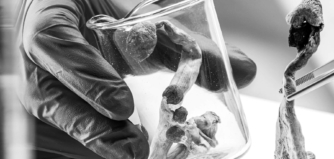Does Your CRO Know the Road to Patient Enrollment?

May 2, 2023
Improving time to market is an ongoing priority for pharmaceutical, biotech and combination drug sponsors — especially for small- to medium-size organizations — and trial timing hinges on effective and efficient patient recruitment. Few things can stall your clinical trial progress quite as successfully as patient enrollment issues, and few things can cause patient enrollment issues quite as successfully as poor site selection. This leads to mounting problems, because “sites unable to recruit enough patients increase the length of the enrollment period and become an economic burden,” as summed up in a BMJ article.
Successfully avoiding these problems comes down to your CRO’s ability to select the right sites for your research. Given that low accrual rate was chosen as the single highest reason for trial termination by 55% of respondents in a GlobalData study, it’s vital you know what to watch for when choosing a CRO partner and what to expect from them during site selection, which can make or break enrollment.
An Interesting Time to Be a CRO
In the early 2000s, the CRO industry was still adjusting to a period of astonishing growth and M&A activity in which the essential relationship between CROs and sponsors had evolved. While services had previously been contracted mostly to provide additional capacity for spillover, a general trend toward cutting costs through outsourcing coupled with a boom in biotechnology increased demand for additional offerings. In this new environment, a sponsor could outsource virtually the entire process to a CRO if they were so inclined — from ideation to commercialization.
A) The Right CRO
Your CRO evaluation may focus on site selection, but there are unrelated and adjacent elements that inform who you should contract with. One solid place to start your analysis is by understanding the ins and outs of your account team: Who is on it? What is their availability? Ensure they’re not only offering you experts, but that you will also be able to access those experts as needed. If your CRO is spread too thin to deal with your challenges in a timely manner, the odds against getting the best sites for your research start sinking before you even get started.
Among the things to examine are your CRO’s feasibility assessment process and their history of successes and failures. In order to both adhere to timelines and reach the right patients, CROs must have a solid network of sites they inspect with regard to the unique needs of your research. This requires evaluating potential locations based on an ever-evolving web of tailored inquiries, including whether the available population fits the focus of the trial, if the site offers the necessary space and technology and whether similar studies are being conducted in the same area. It’s also helpful to review results of previous studies located at the site for early termination, delays or other troubling issues. While we’ll delve further into site selection in the next section, familiarizing yourself with a CRO’s feasibility strategy and allowing that to inform an analysis of successes and failures can offer useful insight.
B) The Right Sites
The value of site selection to the success of patient enrollment is hard to overemphasize. If your CRO suggests the wrong option, you could wind up with a state-of-the-art facility and zero patients. Make sure to team with a CRO operating from a robust in-house site database. By filtering results to correspond with your patient specifications and study requirements, you can automate a great deal of the initial search for appropriate sites, ensuring you find locations convenient to eligible participants quickly.
While almost every aspect of site selection affects patient enrollment and retention, here are three main elements that can help CROs find the sites most likely to supply the right patients for your trial:
1) Unsurprisingly, ensuring there is an adequate population of eligible participants within proximity of the site is of utmost importance. Through querying their database, your CRO should be able to determine the prevalence of the disease or condition being studied, as well as the capabilities of the site in contacting these individuals. The parameters guiding this and other aspects of site selection are determined by the specifics of your study.
2) The ability of a site to provide patients who meet your criteria is often due to their history with similar studies. If your CRO is able to identify sites that have conducted trials using patients who fit your needs, you’ve boosted your odds of enrolling patients on time and on budget. Assuming adequate maintenance of records and suitable outreach capabilities on the part of the site, you have a built-in patient pool that matches your research.
3) Another important thing for your CRO to check is what other trials in the area might be competing for the same patients. If you’re running an oncology trial, there’s a chance other oncology trials have selected the same region because of the available patient pool, thus making that patient pool less available. Ideally, your CRO will identify sites that meet your criteria but don’t put you in competition with other clinical trials.
C) The Right Partnership
Finding, enrolling and retaining the right patients for your research requires a CRO that can access the right sites, but to get the best out of both recruitment and retention, make sure they also provide expert project managers and CRAs knowledgeable in your unique requirements and skilled in training investigators. Finding a CRO that prioritizes project management can keep your timeline and budget on track while smoothing the process for patients and offering high-quality results.
Your CRO must offer proactive analysis of site screening and enrollment logs, along with other relevant documentation, in order to identify trends early and quickly intervene at the site level or discuss remedies with the sponsor to avoid delays. You’ll also benefit from an organization that fits your size, as small- to midsize sponsors are often a secondary concern at large CROs. Partnering with a right size, flexible team that acts as an extension of your own and maintains responsiveness to emerging needs throughout your research means you get consistent, personalized service. And when paired with excellent site selection services, you also get a clear path to the right patients.
PRC Clinical has been bringing right-size solutions to site selection for 20 years. Explore our services.



